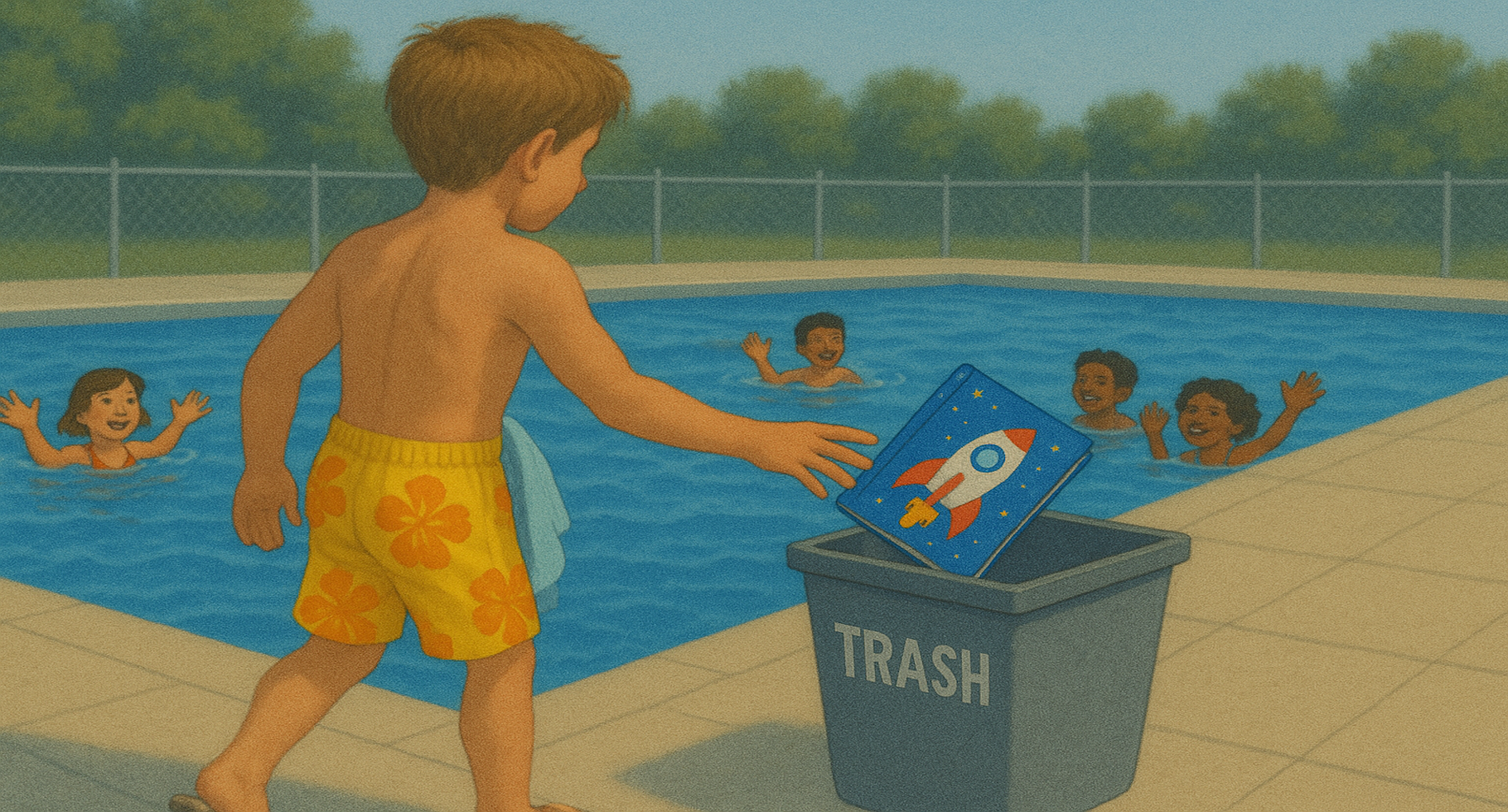Summer break brings sunshine, free time, and much-needed rest — but it can also quietly undo months of reading growth. For elementary students, staying motivated to read outside of school is tough.
Here are 5 common reasons young readers lose momentum in the summer — and ways families and educators can help keep the spark alive.
1. Challenge: No more classroom routine Without school, there’s no set reading time — and many kids simply forget to pick up a book.
Motivate them by building a new routine. Make reading part of their summer rhythm — right after breakfast, before screen time, or as a bedtime ritual. Keep it relaxed, but consistent¹.
2. Challenge: The books aren’t exciting Children are more likely to read when the material reflects their interests, but they’re often stuck with books that don’t feel relevant or fun.
Let them choose what they read. Whether it’s comics, joke books, or adventure stories — choice gives kids a sense of ownership. Even co-creating stories together can deepen engagement².
3. Challenge: Competing with screens Tablets, games, and TV shows are designed to capture attention. Books? Not so much — unless we make them just as immersive.
Turn reading into an experience. Use interactive books, audiobooks, or apps that blend storytelling with visuals. Pair reading with drawing, acting, or outdoor play to keep it active³.
4. Challenge: Reading feels like schoolwork Some children associate reading with pressure or performance — so when school’s out, they check out.
Redefine reading as fun. Celebrate reading like any other summer activity. Build a reading fort, host a “read-a-thon,” or let your child read to a pet. Lower the pressure; raise the joy⁴.
5. Challenge: Lack of encouragement at home When adults are busy or unsure how to help, reading can quietly fall away.
Get involved — even in small ways. You don’t have to be a teacher to help. Ask your child about the story. Read aloud together. Let them tell you a story. Just showing interest makes a big difference⁵.
Reading can be one of the most magical parts of summer — if we make space for it.
References
- Kim, J. S. (2004). Summer reading and the ethnic achievement gap. Journal of Education for Students Placed at Risk, 9(2), 169–188. https://doi.org/10.1207/s15327671espr0902_5
- Scharber, C., & Sandmann, A. (2011). Practicing what we teach: How experience in a summer literacy program influenced teachers’ beliefs and practices. Journal of Language and Literacy Education, 7(1), 1–20.
- Rideout, V., & Robb, M. B. (2019). The Common Sense Census: Media use by tweens and teens. Common Sense Media. https://www.commonsensemedia.org
- Guthrie, J. T., & Wigfield, A. (2000). Engagement and motivation in reading. Handbook of Reading Research, 3, 403–422.
- National Early Literacy Panel. (2008). Developing Early Literacy: Report of the National Early Literacy Panel. https://lincs.ed.gov/publications/pdf/NELPReport09.pdf

 All Posts
All Posts
